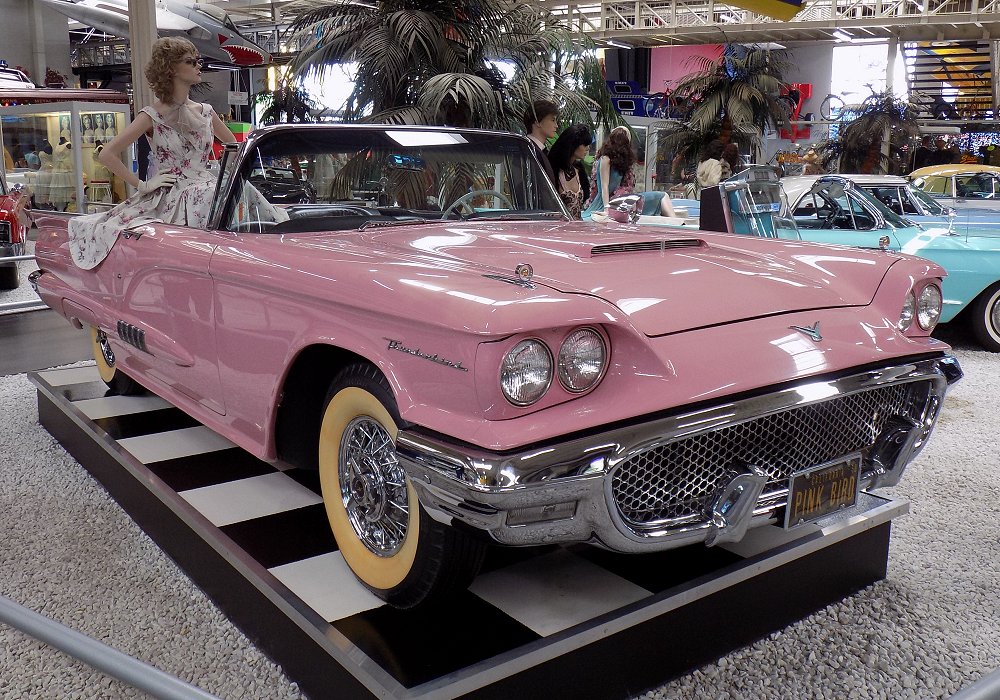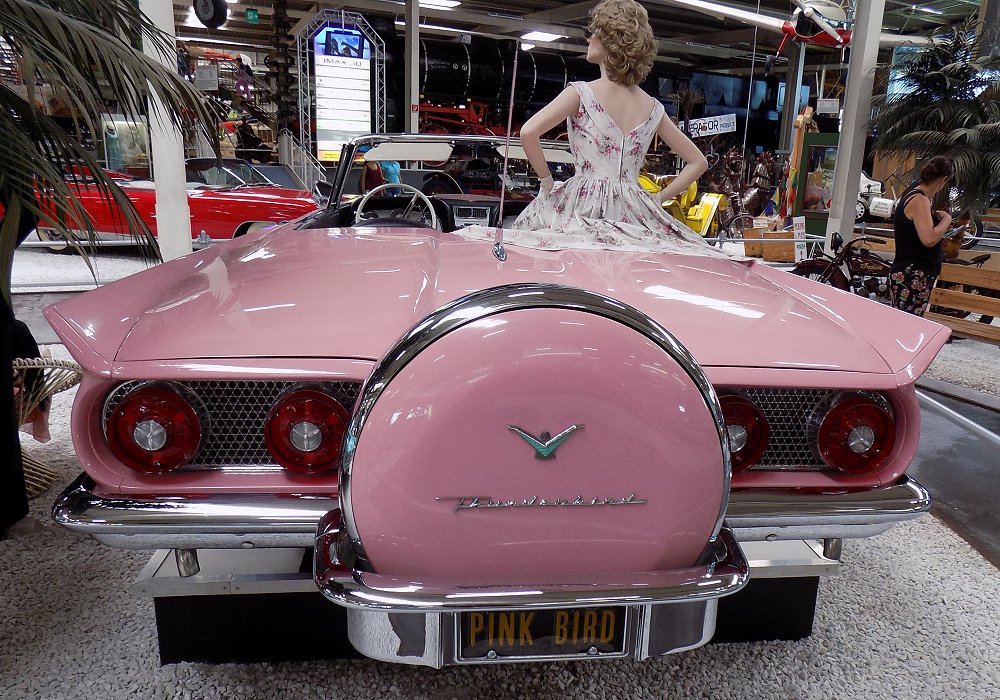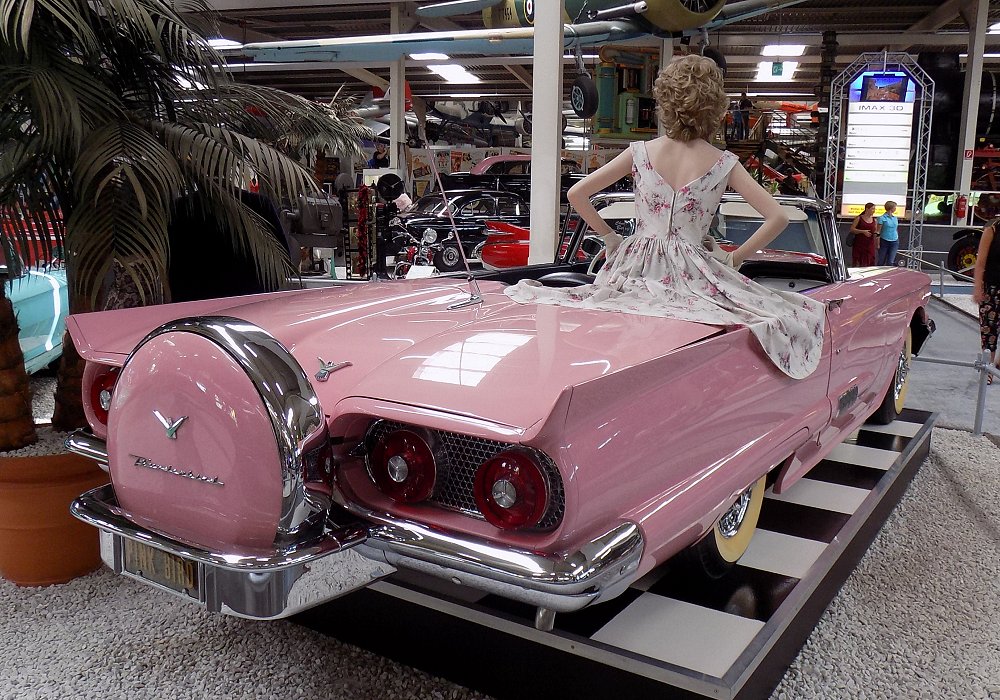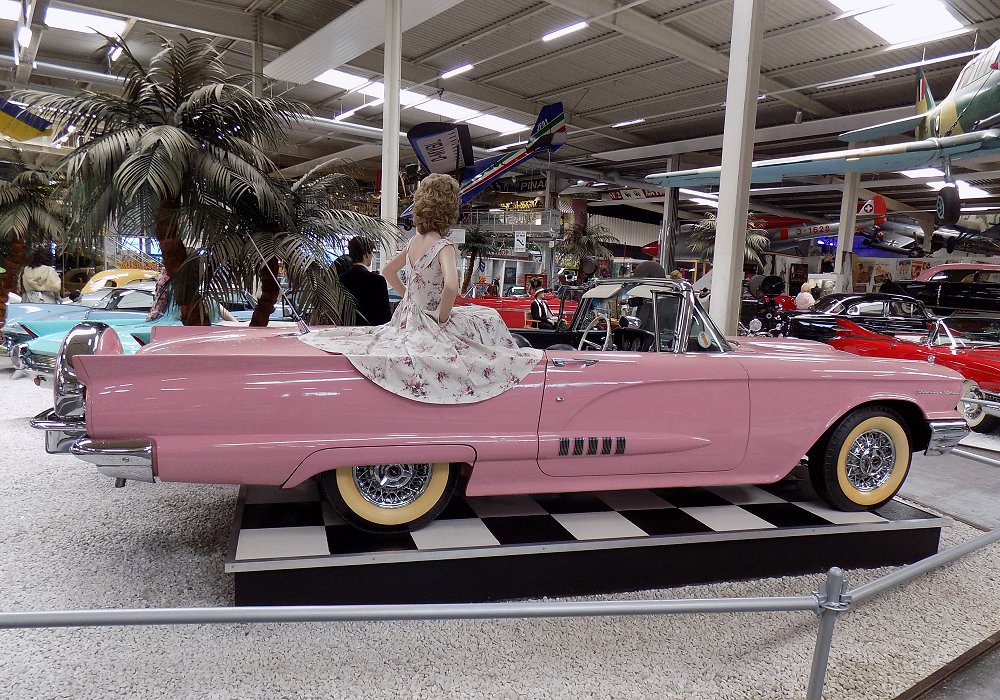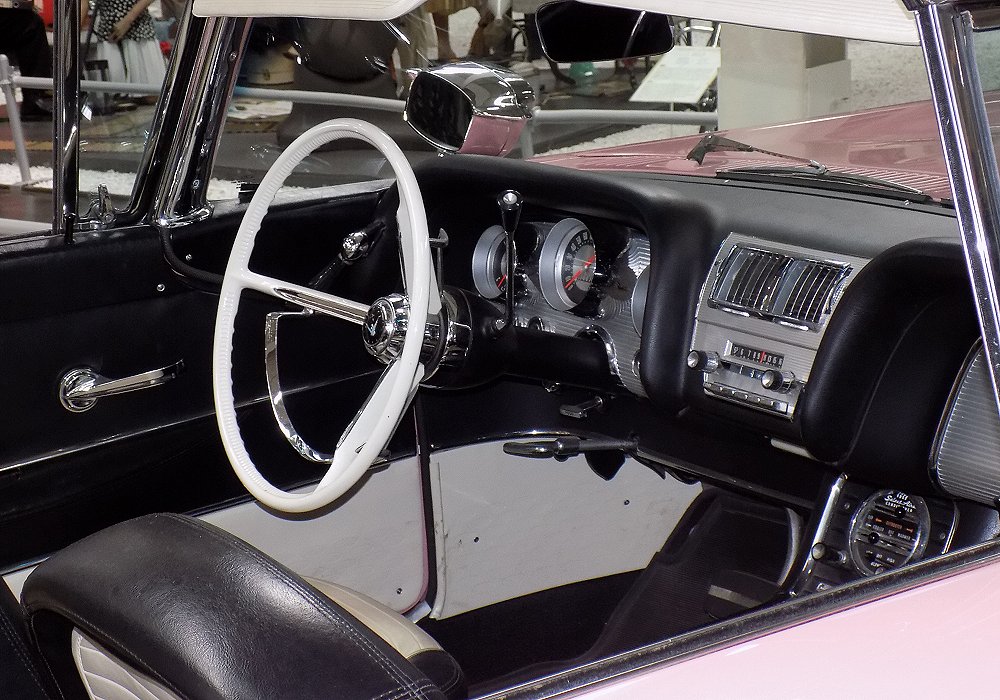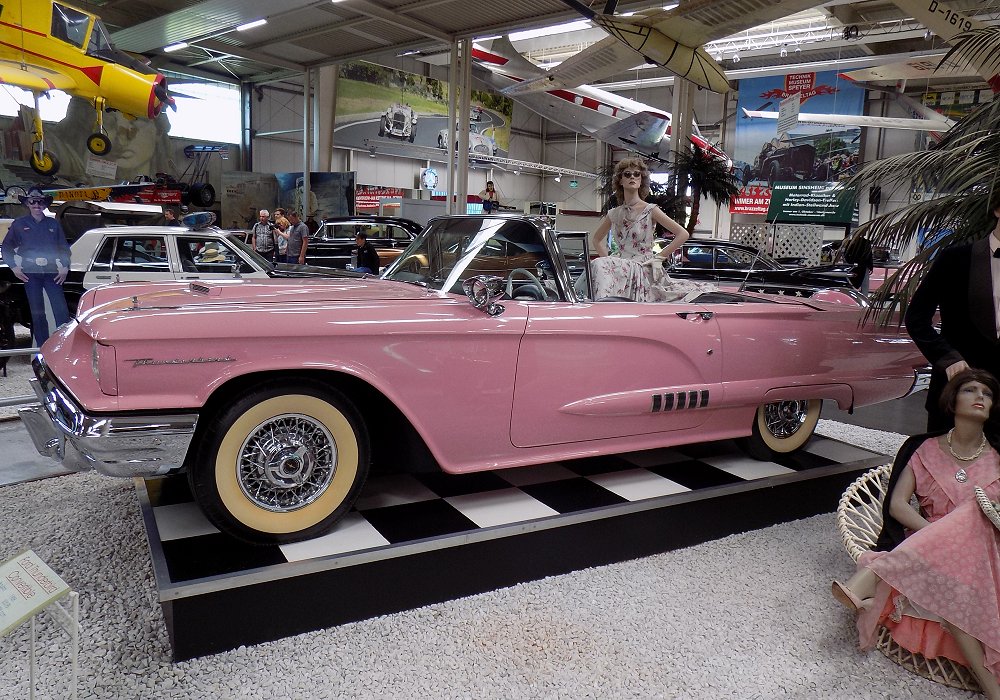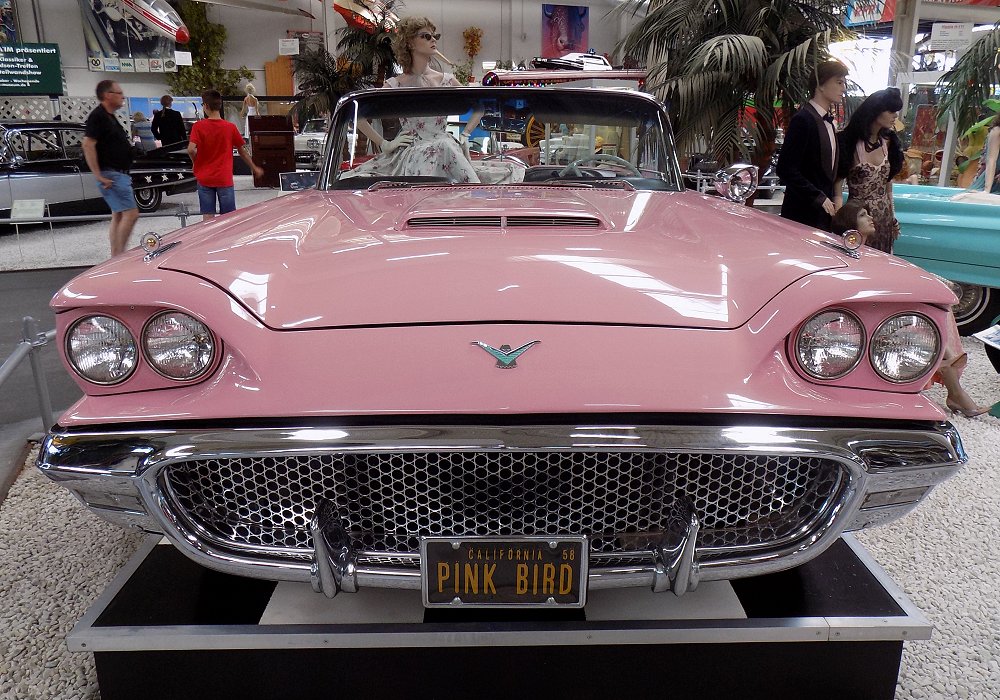Description
The Ford Thunderbird Convertible was one of the most glamorous and iconic body styles in the Thunderbird line, combining the car’s reputation for personal luxury with the thrill of open-air driving. Introduced in 1955 with the very first Thunderbird, the convertible quickly became the most popular choice among buyers, perfectly capturing the spirit of 1950s and 1960s America. Over the years, the Thunderbird Convertible evolved through multiple generations, each reflecting the changing tastes, engineering, and design of its era.
The first-generation Thunderbird (1955–1957) offered a two-seat convertible that immediately set itself apart from European sports cars and Chevrolet’s Corvette. With its long hood, short rear deck, and jet-age details, it emphasized style and prestige over pure performance. Buyers could choose between a power-operated soft top and a removable fiberglass hardtop, the latter becoming famous for its optional “porthole” windows. Inside, the Thunderbird Convertible was a luxury-focused two-seater, offering leather upholstery, chrome-trimmed dashboards, and options such as power windows, power steering, and radios. Engines ranged from the 292 and 312 cubic inch Y-block V8s, producing between 193 and 245 horsepower, paired with manual, overdrive, or Fordomatic transmissions.
In 1958, the second-generation Thunderbird introduced a dramatic shift: the car grew in size and adopted a four-seat configuration, making the convertible a larger and more versatile personal luxury car. Known as the “Square Bird,” the convertible featured clean lines, tailfins, and a power-operated fabric roof that folded behind the rear seat. With engines like the 352 cubic inch and 430 cubic inch V8s producing up to 350 horsepower, the Thunderbird Convertible became a true grand tourer. Its sales success established the Thunderbird as a long-term fixture in Ford’s lineup.
Throughout the 1960s, the Thunderbird Convertible remained a halo model within the range. The third- and fourth-generation cars featured dramatic styling, including bullet-shaped taillights, sculpted sides, and a greater emphasis on comfort. The convertible tops were power-operated, with mechanisms that folded the roof into concealed compartments for a clean appearance. Interiors grew more luxurious, with bucket seats, center consoles, and increasing use of chrome and woodgrain trim. Engines expanded in size and power, including the 390 and 428 cubic inch V8s, catering to drivers who wanted effortless cruising power.
By the late 1960s, the Thunderbird Convertible began to fade from the lineup as tastes shifted toward hardtops and personal luxury coupés, which were more practical and less expensive to produce. The final Thunderbird Convertible was offered in 1966, after which Ford discontinued the body style. However, the legacy of the convertible Thunderbirds remained strong, and the model was revived in spirit decades later with retro-inspired designs.
Today, the Ford Thunderbird Convertible is one of the most collectible and celebrated American classics. Early two-seat models are highly sought after for their timeless design and cultural significance, while later four-seat convertibles are admired for their combination of power, style, and 1960s glamour. Whether from the 1950s jet-age era or the grand touring years of the 1960s, the Thunderbird Convertible continues to symbolize open-air motoring at its most stylish and sophisticated.
